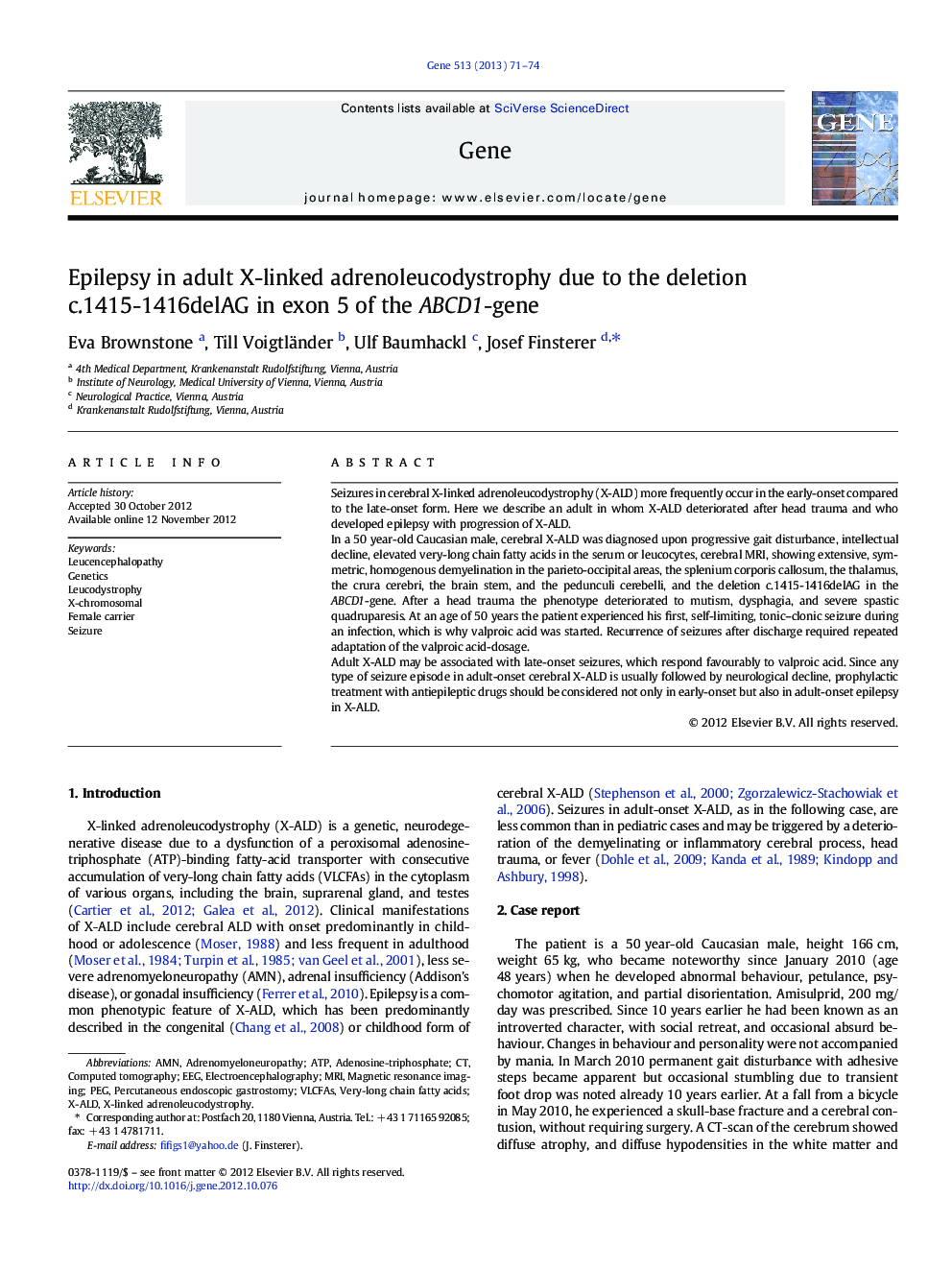| Article ID | Journal | Published Year | Pages | File Type |
|---|---|---|---|---|
| 2817501 | Gene | 2013 | 4 Pages |
Seizures in cerebral X-linked adrenoleucodystrophy (X-ALD) more frequently occur in the early-onset compared to the late-onset form. Here we describe an adult in whom X-ALD deteriorated after head trauma and who developed epilepsy with progression of X-ALD.In a 50 year-old Caucasian male, cerebral X-ALD was diagnosed upon progressive gait disturbance, intellectual decline, elevated very-long chain fatty acids in the serum or leucocytes, cerebral MRI, showing extensive, symmetric, homogenous demyelination in the parieto-occipital areas, the splenium corporis callosum, the thalamus, the crura cerebri, the brain stem, and the pedunculi cerebelli, and the deletion c.1415-1416delAG in the ABCD1-gene. After a head trauma the phenotype deteriorated to mutism, dysphagia, and severe spastic quadruparesis. At an age of 50 years the patient experienced his first, self-limiting, tonic–clonic seizure during an infection, which is why valproic acid was started. Recurrence of seizures after discharge required repeated adaptation of the valproic acid-dosage.Adult X-ALD may be associated with late-onset seizures, which respond favourably to valproic acid. Since any type of seizure episode in adult-onset cerebral X-ALD is usually followed by neurological decline, prophylactic treatment with antiepileptic drugs should be considered not only in early-onset but also in adult-onset epilepsy in X-ALD.
► Adult X-linked adrenoleucodystrophy may be associated with late-onset seizures. ► Late-onset seizures in X-linked adrenoleucodystrophy respond to valproic acid. ► Antiepileptic drugs should be given as prophylactic treatment in X-ALD.
